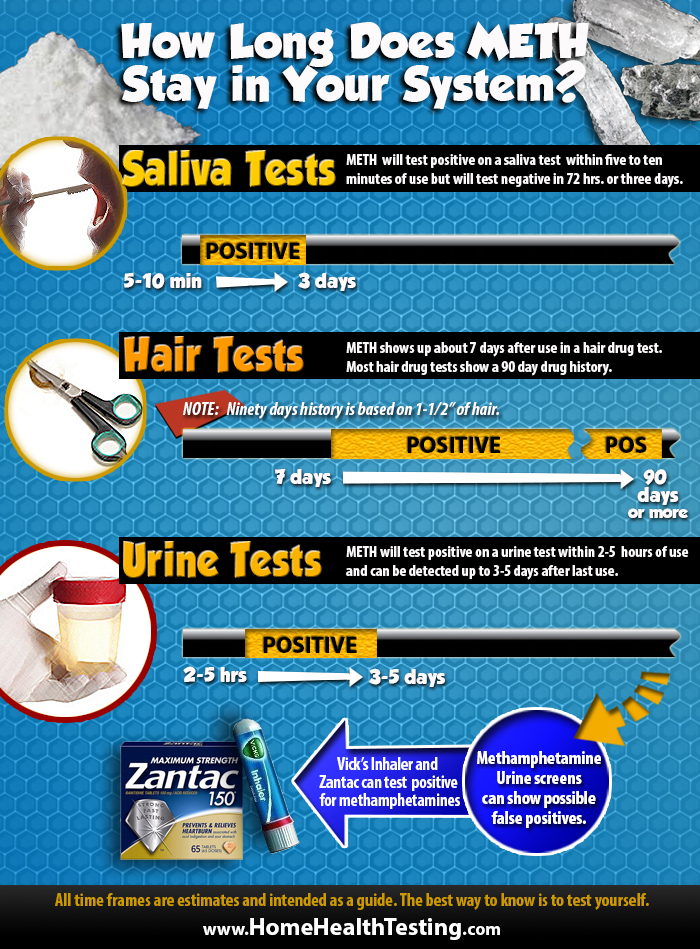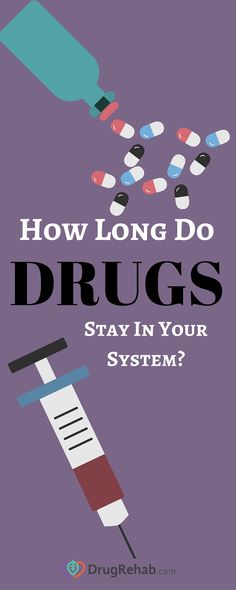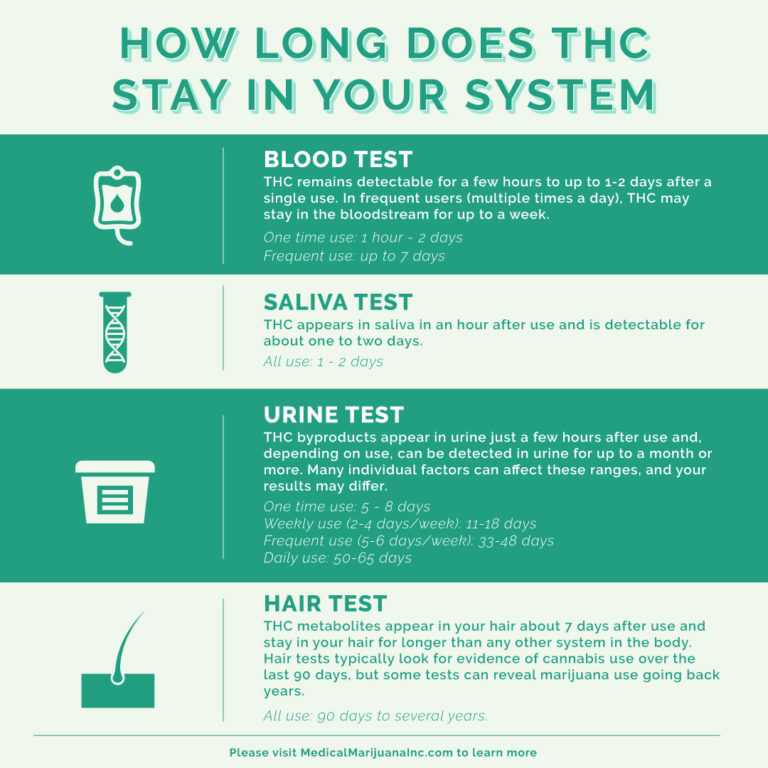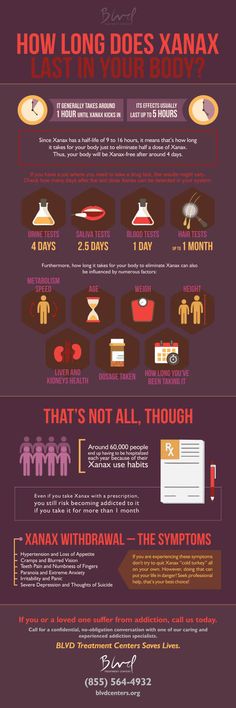How long does it take for xanax to leave your system
How Long Does Xanax Stay in Your System? (Blood, Urine, Saliva)
Xanax, the brand name for Alprazolam, is likely the most popular drug in the benzodiazepine class.
Benzodiazepines are used to treat anxiety, muscle spasms, seizures, and sleep disorders by depressing the central nervous system. Though very effective, they can also be seriously addictive and are often abused recreationally.
Xanax calms the nerves and produces a feeling of relaxation at standard doses, which come in pill form. If taken at high doses, especially if crushed and snorted or mixed into a solution for injection, it can create a euphoric high.
The effects of Xanax begin within a couple minutes and can last for a couple of hours.
Xanax Half-Life
This spike in illegal abuse of Xanax led to the creation of tests to detect the drug in people’s bodily fluids and tissues.
On average, Xanax has an elimination half-life of about 11 hours (though the range is from about 6-27 hours—sometimes higher in obese patients). This means that it takes a healthy person’s body this amount of time to get rid of half of a dose of the drug.
How Long Does Xanax Stay in Your System?
The tests used to detect Xanax in a person’s system are blood tests, urine tests, saliva swabs, and hair follicle analysis. Urine tests are the most commonly used, but the length of time that Xanax stays in this bodily fluid depends largely on how heavy abuse of the drug has been. For occasional users, a urine test will usually not work past 4 days, but in heavy users, it can detect the substance for up to a week.
Saliva and blood tests work on a much shorter timeline. Though they can detect Xanax soon after a dose is taken, saliva tests only work for 2.5 days after the last dose, and blood tests are only effective for a day. Hair tests can detect Xanax for up to a month after the last dose as traces of the drug accumulate in the hair follicles. However, it takes much longer for a drug to appear in hair than in bodily fluids, so if a hair sample is taken too soon after someone takes Xanax, the sample may come back negative for the drug.
| Body System | Time in System |
|---|---|
| Blood | 1 day |
| Hair | 1 month |
| Saliva | 2.5 days |
| Urine | 4 days; up to a week for heavy users |
Factors Impacting How Long Xanax Stays in Your Body
Is Xanax Tested for Often?
It’s not as likely for an individual addicted to a benzodiazepine to be tested for the substance as part of drug treatment since addicted individuals are typically weaned off the drug rather than being expected to quit cold turkey. Certain occupations will require testing for drugs and medications that create sedative effects, including benzodiazepines, if the use of heavy machinery is involved. For example, jobs related to driving, positions in the military, and certain factory and construction positions may require this testing. It’s therefore important to switch to a different medication days or weeks before applying for one of these jobs.
Any suspected addiction to a benzodiazepine like Xanax should be treated as soon as possible. Though many people consider prescription medications to be safer than illicit drugs like cocaine or heroin, benzodiazepines have been associated with serious health issues, especially after long-term use. This can be prevented by switching to a safer, non-addictive medication, of which there are plenty. It’s important to only stop taking Xanax under medical supervision, as the withdrawal process can be dangerous without medical help.
How Long Does Xanax Stay in Your System?
How Long Does Xanax Stay in Your System?- Health Conditions
- Featured
- Breast Cancer
- IBD
- Migraine
- Multiple Sclerosis (MS)
- Rheumatoid Arthritis
- Type 2 Diabetes
- Articles
- Acid Reflux
- ADHD
- Allergies
- Alzheimer's & Dementia
- Bipolar Disorder
- Cancer
- Crohn's Disease
- Chronic Pain
- Cold & Flu
- COPD
- Depression
- Fibromyalgia
- Heart Disease
- High Cholesterol
- HIV
- Hypertension
- IPF
- Osteoarthritis
- Psoriasis
- Skin Disorders and Care
- STDs
- Featured
- Discover
- Wellness Topics
- Nutrition
- Fitness
- Skin Care
- Sexual Health
- Women's Health
- Mental Well-Being
- Sleep
- Product Reviews
- Vitamins & Supplements
- Sleep
- Mental Health
- Nutrition
- At-Home Testing
- CBD
- Men’s Health
- Original Series
- Fresh Food Fast
- Diagnosis Diaries
- You’re Not Alone
- Present Tense
- Video Series
- Youth in Focus
- Healthy Harvest
- No More Silence
- Future of Health
- Wellness Topics
- Plan
- Health Challenges
- Mindful Eating
- Sugar Savvy
- Move Your Body
- Gut Health
- Mood Foods
- Align Your Spine
- Find Care
- Primary Care
- Mental Health
- OB-GYN
- Dermatologists
- Neurologists
- Cardiologists
- Orthopedists
- Lifestyle Quizzes
- Weight Management
- Am I Depressed? A Quiz for Teens
- Are You a Workaholic?
- How Well Do You Sleep?
- Tools & Resources
- Health News
- Find a Diet
- Find Healthy Snacks
- Drugs A-Z
- Health A-Z
- Health Challenges
- Connect
- Breast Cancer
- Inflammatory Bowel Disease
- Psoriatic Arthritis
- Migraine
- Multiple Sclerosis
- Psoriasis
Medically reviewed by Lindsay Slowiczek, PharmD — By Rachel Nall, MSN, CRNA — Updated on July 23, 2021
Alprazolam (Xanax) is a medication that belongs to the drug class doctors call “benzodiazepines. ” People take it to relieve symptoms of anxiety and panic disorders.
” People take it to relieve symptoms of anxiety and panic disorders.
The average person eliminates half a Xanax dose from their system in about 11.2 hours, according to the Xanax prescribing information. It can take days before your body fully eliminates Xanax from your system.
However, tests can detect Xanax in a person’s system for much longer. Factors like the dose and a person’s overall health may affect how long this takes.
Keep reading to find out how long Xanax stays in your body — and how long different testing methods may detect it.
Different benzodiazepines work for various amounts of time. For example, midazolam (Nayzilam) is a short-acting benzodiazepine while clonazepam (Klonopin) is a longer-acting one. Xanax is somewhere in the middle.
When you take Xanax, your body absorbs it, and a large part of it binds to circulating proteins. In about 1 to 2 hours, Xanax reaches its peak (maximum) concentration in your body. While doctors don’t know exactly how it works, they do know it depresses the central nervous system to help relieve anxiety.
After that, your body starts breaking it down, and its effects start to lessen.
Just because Xanax stays in your system, doesn’t mean that you feel its effects as long. You’ll usually start to feel less anxious within 1 to 2 hours of taking it. If you take it regularly, you may be able to maintain the concentrations of Xanax in your blood so you don’t feel like it’s worn off.
Pharmaceutical manufacturers also make extended-release versions of Xanax. These are made to last longer in your system so you don’t have to take as much each day. These formulations could last longer in your system.
Doctors can test for the presence of Xanax in a variety of ways. The method may determine how long a test can detect Xanax. These include:
- Blood. It can vary how long laboratories can detect Xanax in your blood. Most people have about half the dose of Xanax in their blood within a day. However, it can take several days longer for the body to completely eliminate Xanax, according to the Xanax prescribing information.
 Even if you don’t feel the anxiety-relieving effects anymore, a laboratory may be able to detect Xanax in the blood for up to 4 to 5 days.
Even if you don’t feel the anxiety-relieving effects anymore, a laboratory may be able to detect Xanax in the blood for up to 4 to 5 days. - Hair. Laboratories can detect Xanax in head hair for up to 3 months, according to the United States Drug Testing Laboratories. Because body hair doesn’t usually grow as quickly, a laboratory may test a positive result for up to 12 months after taking Xanax.
- Saliva. A 2015 study of 25 people using saliva samples found the maximum time Xanax stayed detectable in a person’s oral fluid was 2 1/2 days.
- Urine. Not all drug tests can identify benzodiazepines or Xanax specifically, according to an article in the Journal Laboratory Medicine. However, some urine drug screens can detect Xanax for up to 5 days.
These timeframes can vary based on how quickly your body breaks down Xanax and the sensitivity of the laboratory test.
Doctors don’t conduct a lot of studies on pregnant women and medications because they don’t want to hurt their babies. This means a lot of medical knowledge comes from reports of or studies that indicate possible problems.
This means a lot of medical knowledge comes from reports of or studies that indicate possible problems.
Doctors assume that Xanax does cross the placenta and therefore can affect a baby. Most doctors will recommend stopping taking Xanax at least for the first trimester to try and reduce birth defects.
If you take Xanax while pregnant, it’s possible your baby could be born with Xanax in its system. It’s really important you have an honest discussion with your doctor if you’re pregnant about how much Xanax you take and how it can affect your baby.
Yes, Xanax can pass through breast milk. An older study from 1995 studied the presence of Xanax in breast milk, and found the average half-life of Xanax in breast milk was about 14.5 hours, according to the British Journal of Clinical Pharmacology.
Breastfeeding while taking Xanax could cause a baby to be more sedated, affecting their breathing. Xanax also can reduce the risks for seizures, so when a baby withdraws from Xanax, they could have a seizure.
Most doctors won’t recommend taking Xanax while breastfeeding unless absolutely necessary. They can usually prescribe medicines that are shorter acting or have a different action in the body, so they’re less likely to affect a baby.
Several factors affect how long Xanax stays in your system. Some make it stay in your system longer while others mean it stays in for less time.
Xanax lasts longer in these circumstances:
- Alcoholic liver disease. Because the liver helps break down Xanax, a person whose liver doesn’t work as well will take longer to break it down. The average half-life for Xanax in this population is 19.7 hours, according to the Xanax prescribing information.
- Elderly. Older people usually take longer to break down Xanax. The average half-life in an elderly person is about 16.3 hours, according to the Xanax prescribing information.
- Obesity. The half-life of Xanax in a person with obesity is 21.
 8 hours on average — that’s 10 hours more than in a person who is “average sized,” according to the Xanax prescribing information.
8 hours on average — that’s 10 hours more than in a person who is “average sized,” according to the Xanax prescribing information.
Xanax may last a shorter amount of time if a person takes certain medications that speed up the elimination of medicines. Doctors call these medicines “inducers.” They include:
- carbamazepine
- fosphenytoin
- phenytoin
- topiramate (Topamax)
Doctors prescribe these medicines to reduce seizure activity.
Other examples that can speed up the elimination of medicines include St. John’s wort, which is a supplement used to improve moods, and rifampin (Rifadin), which is used for infections.
Xanax isn’t the longest-acting benzodiazepines, but it isn’t the shortest either. Your body will usually metabolize most of the Xanax in a day. The rest you may not feel, but will still be there in detectable levels.
Last medically reviewed on October 30, 2019
How we reviewed this article:
Healthline has strict sourcing guidelines and relies on peer-reviewed studies, academic research institutions, and medical associations. We avoid using tertiary references. You can learn more about how we ensure our content is accurate and current by reading our editorial policy.
We avoid using tertiary references. You can learn more about how we ensure our content is accurate and current by reading our editorial policy.
- Alprazolam - drug summary. (n.d.).
pdr.net/drug-summary/Xanax-alprazolam-1873.31#topPage - Benzodiazepines. (n.d.).
mayocliniclabs.com/test-info/drug-book/benzodiazepines.html - FDA requiring Boxed Warning updated to improve safe use of benzodiazepine drug class. (2020).
https://www.fda.gov/drugs/drug-safety-and-availability/fda-requiring-boxed-warning-updated-improve-safe-use-benzodiazepine-drug-class - Hair drug testing. (n.d.).
usdtl.com/testing/hair-drug-test-labs - Jones AW, et al. (2013). Concentration of alprazolam in blood from impaired drivers and forensic autopsies were not much different but showed a high prevalence of co-ingested illicit drugs. DOI:
10.1177/0269881112471155 - Kampfrath T, et al. (2015).
 Benzodiazepine in a urine specimen without drug metabolites. DOI:
Benzodiazepine in a urine specimen without drug metabolites. DOI:
10.1309/LMIG49YDFSUNQ2YS - Nordal K, et al. (2015). Detection times of diazepam, clonazepam, and alprazolam in oral fluid collected from patients admitted to detoxification after high and repeated drug intake. DOI:
10.1097/FTD.0000000000000174 - Oo, C, et al. (1995). Pharmacokinetics in lactating women: prediction of alprazolam transfer into milk. DOI:
10.1097/FTD.0000000000000174 - Xanax. (n.d.).
pfizermedicalinformation.com/en-us/xanax/clinical-pharmacology - Xanax: Alprazolam tablets, USP . (2011).
accessdata.fda.gov/drugsatfda_docs/label/2011/018276s045lbl.pdf
Our experts continually monitor the health and wellness space, and we update our articles when new information becomes available.
Current Version
Jul 23, 2021
Written By
Rachel Nall, MSN, CRNA
Edited By
Yvette Brazier
Copy Edited By
Copy Editors
Oct 30, 2019
Written By
Rachel Nall, MSN, CRNA
Edited By
Debbie Nurmi
Medically Reviewed By
Lindsay Slowiczek, PharmD
Share this article
Medically reviewed by Lindsay Slowiczek, PharmD — By Rachel Nall, MSN, CRNA — Updated on July 23, 2021
Read this next
How Long Does Xanax Last?
Medically reviewed by Alan Carter, Pharm.
 D.
D.People taking Xanax often build up a tolerance. It may take longer to feel the effects of Xanax or it may not feel as strong. Here's what you need to…
READ MORE
Can You Overdose on Xanax?
Medically reviewed by Alan Carter, Pharm.D.
Xanax, the brand name for alprazolam, is a prescription medication used to treat anxiety and panic disorder. But can you accidentally overdose?
READ MORE
What Does Xanax Feel Like? 11 Things to Know
Medically reviewed by Alan Carter, Pharm.D.
Xanax (alprazolam) doesn't affect everyone in the same way. How Xanax will affect you depends on several factors, including your mental state at the…
READ MORE
How to Help Someone Having a Panic Attack
Medically reviewed by Alana Biggers, M.
 D., MPH
D., MPHYour words and actions can make a big difference for someone experiencing a panic attack. Here's a look at what you can do, as well as a few pitfalls…
READ MORE
7 Steps for Getting Through a Panic Attack
Medically reviewed by Deborah Weatherspoon, Ph.D., MSN
READ MORE
How to Ease Anxiety at Night
Anxiety at night when trying to sleep may cause racing thoughts and physical symptoms. Sleep deprivation can also trigger it. Here's how to calm it…
READ MORE
Will Prozac Work for Your Anxiety?
Prozac (fluoxetine) is a brand-name medication prescribed to treat depression, OCD, and anxiety. We explain how it works and why it may help treat…
READ MORE
The Best Anxiety Tools: An Expert’s Advice
Medically reviewed by Karin Gepp, PsyD
From essential oils to journals to meditation apps, you have plenty of options for tools to help ease anxiety symptoms.
 Check out our top picks.
Check out our top picks.READ MORE
How to Recognize Selective Mutism and Tips to Get Support
Medically reviewed by Mia Armstrong, MD
The main sign of selective mutism is the inability to speak in certain situations. Get the details on this anxiety condition and how to treat it.
READ MORE
Yes, Adults Can Have Selective Mutism — Learn the Causes and How to Cope
Medically reviewed by Kendra Kubala, PsyD
Selective mutism is a type of anxiety where you can't speak in certain contexts. Though most common in children, it can also affect adults.
READ MORE
How long does Xanax stay in your system?
Alprazolam (Xanax) is a medicine that belongs to a group of medicines called benzodiazepines. People take it to relieve symptoms of anxiety and panic disorders.
The average person eliminates half a dose of Xanax from the body in about 11.2 hours, according to the journal. Xanax Prescribing Information It may take several days for your body to completely eliminate Xanax from your body.
However, tests may take much longer to detect Xanax in the human body. Factors such as dose and a person's general health can affect how long it lasts. nine0003
Continue reading to find out how long Xanax stays in your body and how long it can be detected using various testing methods.
content
How long does it take for Xanax to start working?
Different benzodiazepines take different amounts of time to act. For example, midazolam (Naizilam) is a short-acting benzodiazepine, while clonazepam (Klonopin) has a longer-acting effect. Xanax is somewhere in between. nine0003
When you take Xanax, your body absorbs it and most of it binds to circulating proteins. After about 1-2 hours, Xanax reaches its maximum (peak) concentration in the body. While doctors don't know exactly how it works, they do know that it depresses the central nervous system to reduce anxiety.
While doctors don't know exactly how it works, they do know that it depresses the central nervous system to reduce anxiety.
After that, your body starts to break down and its effects begin to decrease.
How long does a dose of Xanax last?
Just because Xanax stays in your system doesn't mean you'll feel its effects for long. You will usually begin to feel less anxiety within 1-2 hours of taking it. If you take it regularly, you will be able to keep your Xanax blood levels up so you don't feel exhausted.
Pharmaceutical manufacturers also make an extended version of Xanax. They are meant to stay in your body longer so you don't have to take that much every day. These compounds may take longer on your system. nine0003
How long will Xanax show up on drug tests?
Doctors can test for Xanax in a variety of ways. The method can determine how long the test can detect Xanax. This includes:
- Blood. This may vary depending on how long labs can detect Xanax in your blood.
 Most people have about half their dose of Xanax in their blood during the day. However, it may take a few days longer for the body to get rid of Xanax completely, he says. Xanax Prescribing Information Even if you no longer experience anxiety relief effects, the lab may detect Xanax in your blood for up to 4-5 days. nine0032
Most people have about half their dose of Xanax in their blood during the day. However, it may take a few days longer for the body to get rid of Xanax completely, he says. Xanax Prescribing Information Even if you no longer experience anxiety relief effects, the lab may detect Xanax in your blood for up to 4-5 days. nine0032 - Hair. Labs can detect Xanax in scalp hair for up to 3 months. Joint Drug Testing Labs Because body hair usually doesn't grow as fast, a lab test can come back positive up to 12 months after taking Xanax.
- Saliva. A 2015 study of 25 people who used saliva samples found that the maximum time Xanax remained detectable in human oral fluid was 2 1/2 days. nine0032
- Urine. Not all drug tests can specifically identify benzodiazepines or Xanax. Journal of Laboratory Medicine. However, some urine drug tests may detect Xanax for up to 5 days.
This time frame may vary depending on how quickly your body breaks down while taking Xanax and your sensitivity to lab tests.
Xanax and pregnancy
Doctors don't do a lot of research on pregnant women and drugs because they don't want to harm their baby. This means that a lot of medical knowledge comes from reports or studies that point to possible problems. nine0003
Doctors suggest that Xanax crosses the placenta and may therefore affect the baby. Most doctors will recommend that you stop taking Xanax for at least the first trimester to try and reduce birth defects.
If you take Xanax during pregnancy, it is possible that your baby will be born with Xanax in the body. If you're pregnant, it's important to be honest with your doctor about how much Xanax you're taking and how it might affect your baby. nine0003
Does Xanax pass through breast milk?
Yes, Xanax can pass through breast milk. An earlier study in 1995 looked at the presence of Xanax in breast milk and found that the average half-life of Xanax in breast milk was about 14.5 hours. British Journal of Clinical Pharmacology.
Breastfeeding while taking Xanax may cause the baby to calm down, which will affect his breathing. Xanax may also reduce the risk of seizures, so when a child refuses Xanax, they may have a seizure. nine0003
Most doctors do not recommend taking Xanax while breastfeeding unless absolutely necessary. They can usually be prescribed short-acting or other-acting drugs in the body, so they are less likely to affect the baby.
How long does Xanax stay in your body?
Several factors affect how long Xanax stays in your system. Some make it stay on your system longer, while others mean it stays shorter. nine0003
Xanax lasts longer under the following circumstances:
- Alcoholic liver disease. Because the liver helps break down Xanax, a person whose liver is not working well will take longer to break it down. The mean half-life of Xanax in this population is 19.7 hours, he said. Information about the appointment of Xanax.
- Adults. Older people usually take longer to break down Xanax.
 According to the data, the average elimination half-life in the elderly is about 16.3 hours. Information about the appointment of Xanax. nine0032
According to the data, the average elimination half-life in the elderly is about 16.3 hours. Information about the appointment of Xanax. nine0032 - Obesity. The half-life of Xanax in an obese person is on average 21.8 hours, which is 10 hours longer than in a person of "average build". Information about the appointment of Xanax.
Xanax may take less time if the person is taking certain medicines that speed up the elimination of the medicine. Doctors call these drugs "inductors." This includes:
- carbamazepine
- Fosphenytoin
- phenytoin
- topiramate (Topamax)
Doctors prescribe these drugs to reduce seizure activity.
Other examples that can speed up the elimination of drugs include St. John's wort, which is used to improve mood, and rifampin (Rifadin), which is used for infections.
Excursion
Xanax is not the longest acting benzodiazepine, but not the shortest either. Your body usually absorbs most of the Xanax in one day. You may not feel the rest, but it will still be at the revealed levels. nine0003
How long does Xanax last: output in your body and more
Alprazolam, better known by the brand name Xanax, is a drug designed to treat anxiety and panic disorders. Xanax belongs to a class of drugs known as benzodiazepines. Considered a mild sedative.
Xanax helps calm the nerves and induces a feeling of relaxation. However, in high doses, it can be abused, which can lead to addiction (dependence). For this reason, it is classified as a federally controlled substance (C-IV). nine0003
If this is your first time taking Xanax, you may be wondering how long the effects will last in your body, factors that can affect how long Xanax stays in your body, and what to do if you decide to stop taking it.
content
How long does it take to feel the effects of Xanax?
Xanax is taken orally and is easily absorbed into the blood. You should begin to feel the effects of Xanax within an hour. The drug reaches maximum concentrations in the bloodstream. one to two hours after ingestion. nine0003
The drug reaches maximum concentrations in the bloodstream. one to two hours after ingestion. nine0003
People who take Xanax often develop a tolerance. These people may take longer to feel the sedative effects of Xanax, or the sedation may not be as strong.
How long does it take for the effects of Xanax to wear off?
One way to find out how long a drug lasts in the body is to measure its half-life. The half-life takes time to remove half of the drug from the body.
Xanax has a mean half-life of approximately 11 sati in healthy adults. In other words, it takes the average healthy person 11 hours to eliminate half a dose of Xanax. However, it is important to note that each person metabolizes drugs differently, so the half-life will vary from person to person. Studies have shown that the half-life of Xanax ranges from 6.3 to 26.9 hours, depending on the individual.
Several half-lives are required for complete elimination of the drug. For most people, Xanax will completely clear the body within two to four days. But you will stop "feeling" the sedative effect of Xanax before the drug has actually completely cleared the body. Therefore, you may be prescribed Xanax up to three times a day. nine0003
But you will stop "feeling" the sedative effect of Xanax before the drug has actually completely cleared the body. Therefore, you may be prescribed Xanax up to three times a day. nine0003
Factors that affect the duration of action of Xanax
A number of factors can affect the time it takes for Xanax to clear the body. This includes:
- Anxiety
- Mass
- Race
- Metabolism
- Function of the liver
- How long you take Xanax
- DOZIRANJE
There is no difference in the middle period of the half -life of the half -life of the half -life
date of birth
The half-life of Xanax is higher in the elderly. Studies have shown a mean half-life of 16.3 sati in healthy older adults compared to a mean half-life of about 11 hours in young healthy adults.
weight
For people who are obese, it can be difficult for the body to break down Xanax. The half-life of Xanax in obese people is above average. It moved between 9.9 and 40.4 hours, averaging 21.8 hours.
It moved between 9.9 and 40.4 hours, averaging 21.8 hours.
Ethnicity
Studies have shown that the half-life of Xanax is increased by 25 in Asians compared to rabies.
Metabolism
A higher basal metabolic rate may shorten the time it takes for Xanax to be eliminated from the body. People who exercise regularly or have a faster metabolism may pass Xanax faster than people who lead a sedentary lifestyle.
Liver function
People with alcoholic liver disease take longer to break down or absorb Xanax. Average half-life of Xanax in people with this liver problem. nineteen.7 sati.
dosage
Each Xanax tablet contains 0.25, 0.5, 1 or 2 milligrams (mg) of alprazolam. Generally, higher doses will metabolize more for your body.
The total length of time you take Xanax will also affect how long the effects last in your system. People who take Xanax regularly will maintain a higher blood concentration at all times. It will take longer for all of the Xanax to be completely cleared from the body, although you don't necessarily "feel" the sedation any more because you've developed a tolerance to the drug. nine0003
nine0003
Other drugs
Xanax removes your body through what is known as cytochrome P450 3A (CYP3A). CYP3A4 inhibitors make it difficult for the body to break down Xanax. This means that the effects of Xanax will last longer.
Medicines that increase the time it takes Xanax to clear from the body include:
- azole antifungals, including ketoconazole and itraconazole
- nefazodone (Serzon), an antidepressant OKR)
- macrolide antibiotics such as erythromycin and clarithromycin
- cimetidine (Tagamet) for heartburn
- propoxyphene, an opioid pain reliever
- oral contraceptives (birth control pills)
- Easy dysphoria (sense of discomfort and anxiety)
- Inability to sleep
- Muscle cramps
- vomiting
- sweatshirts
- CELLECTIONS
help to stimulate or speed up the other side of CY3A These medications will make your body break down with Xanax even faster. Examples include the anticonvulsant drug carbamazepine (Tegretol) and the herbal remedy known as St. John's wort. nine0003
Alcohol use
Alcohol and Xanax, taken in combination, have a synergistic effect on each other. This means that the effects of Xanax are enhanced if you drink alcohol. It will be a long time before Xanax is cleared from your body. Combining alcohol with Xanax can lead to dangerous side effects, including the possibility of a fatal overdose.
This means that the effects of Xanax are enhanced if you drink alcohol. It will be a long time before Xanax is cleared from your body. Combining alcohol with Xanax can lead to dangerous side effects, including the possibility of a fatal overdose.
Withdrawal symptoms
You should not take Xanax abruptly without talking to your doctor as you may have severe withdrawal symptoms. This may include:
should be reduced to reduce the time . This is called constriction. He suggested reducing the daily dose by more than 0.5 mg every three days.
In panic disorder, the dose of Xanax often exceeds 4 mg per day. This can lead to severe physical and emotional dependence and make treatment much more difficult. Your doctor will help you stop your Xanax treatment safely and safely.














